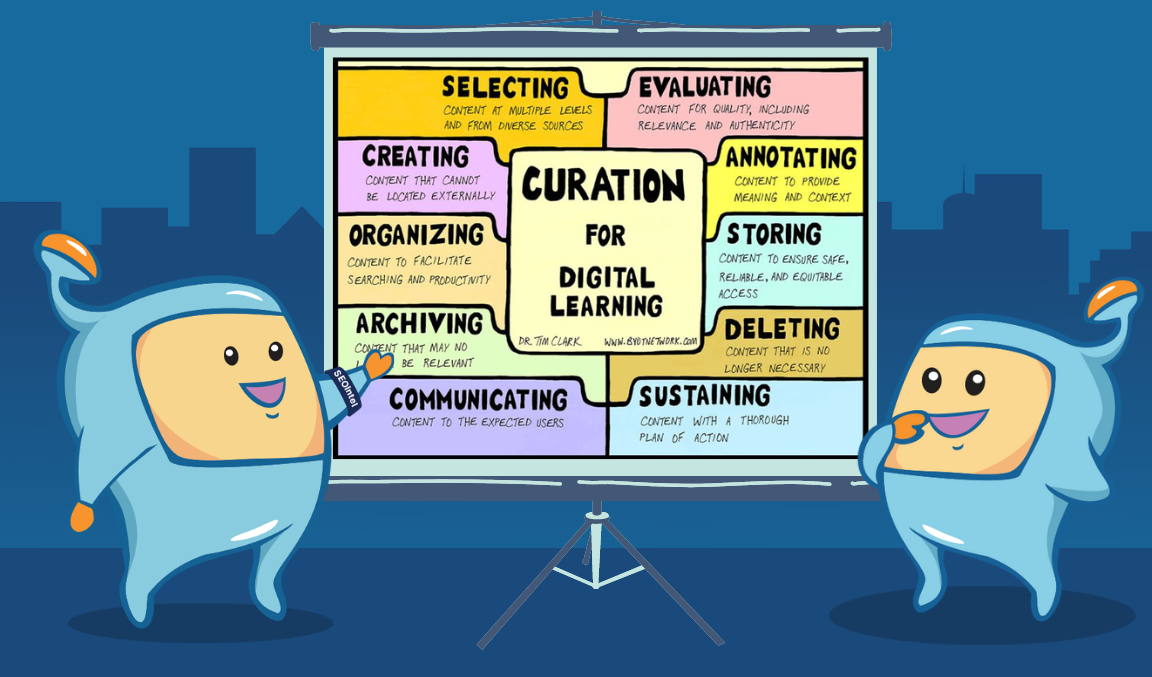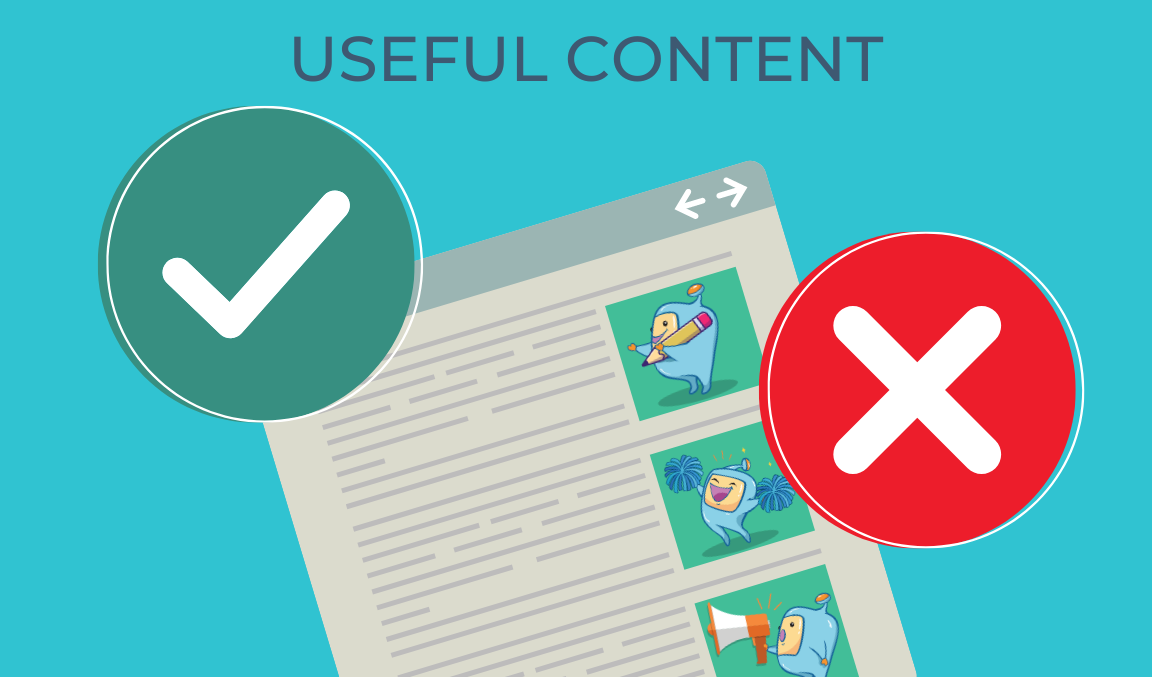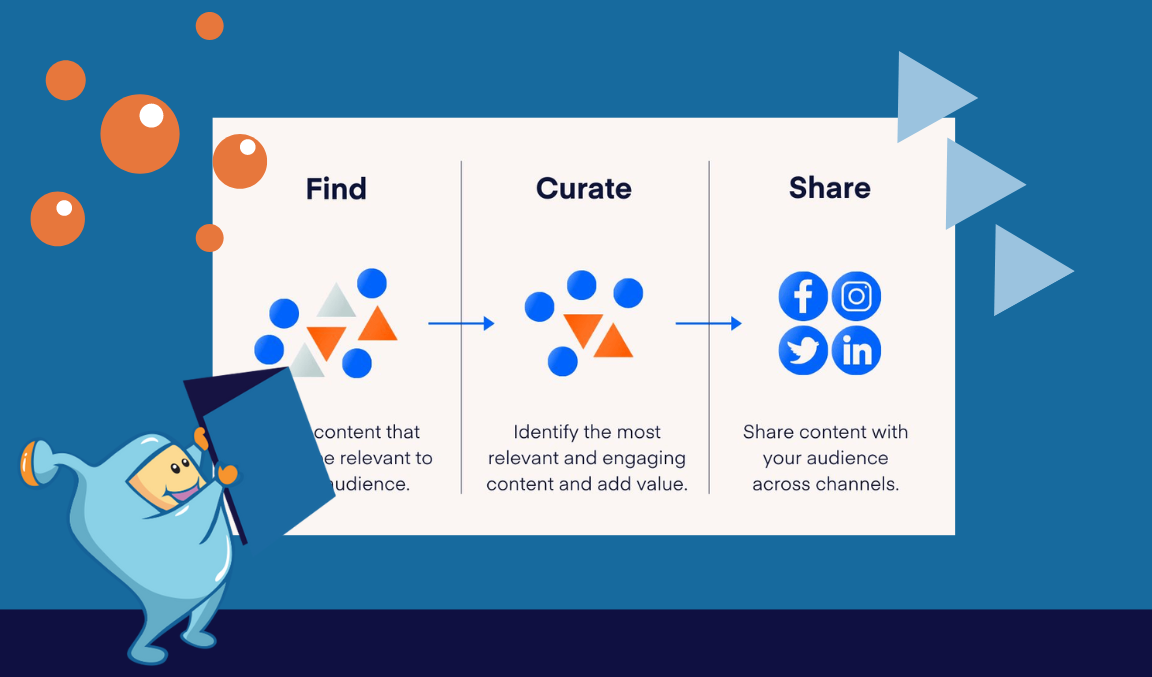In today's digital age, where an overwhelming amount of content is available online, content curation serves as a valuable filter that saves time and delivers relevant and high-quality content to the intended audience.
By carefully selecting and packaging the most valuable resources, content curators provide a unique and valuable service, helping their audience discover valuable insights, stay informed, and navigate through the noise.
In this article, we will explore the concept of content curation, its benefits, best practices, and examples of successful implementations.
Whether you are a marketer, educator, or industry professional, understanding content curation can empower you to deliver exceptional value and establish your brand as a trusted source of curated content.

Here is what you will read in this article:

Content curation is the practice of selecting, organizing, and sharing valuable content from various sources on a specific topic.
It involves filtering through a vast amount of information to identify the most relevant and high-quality content that would be of interest to your target audience.

Content curation offers several benefits that make it a valuable strategy in content marketing:
With the abundance of information available online, content curation helps to cut through the noise and provide your audience with the most valuable and relevant content.
By sifting through numerous articles, blog posts, videos, and other resources, you save your audience time and effort by presenting them with curated content that has already been vetted.
Content curation allows you to showcase exceptional content that might otherwise go unnoticed.
By curating and sharing the best resources available, you become a trusted source of valuable information, guiding your audience towards high-quality content they may not have discovered on their own.
Compared to creating original content from scratch, content curation can be a faster process.
While it still requires careful evaluation and selection, the time spent on research and creation is reduced.
By leveraging existing content, you can quickly compile curated posts or resources for your audience.
By consistently curating and sharing valuable content, you position yourself as an authority in your industry.
Your expertise in selecting and presenting relevant content builds trust and credibility among your audience, establishing you as a thought leader in the field.

To improve your content curation, consider the following steps:
The first step in content curation is to identify content that is worth curating.
Look for high-quality resources, insightful articles, research studies, industry reports, and thought-provoking content that aligns with your audience's interests and needs.
Utilize tools like BuzzSumo's Content Explorer to search for popular content related to your topic of interest.
Explore the search results, filter by relevance and engagement metrics, and save the content that stands out for future curation.
Subscribe to reputable industry email newsletters that curate the best content in your field.
These newsletters often highlight top articles, blog posts, and resources that you can consider for curation.
Maintain a swipe file where you collect and save interesting articles, videos, infographics, and other relevant content that you come across.
This curated collection serves as a valuable resource when creating curated posts or compiling resources.
Utilize search engines like Google to find content on specific topics.
Go beyond the first page of results and explore deeper to discover hidden gems and lesser-known but valuable content that may have been overlooked.
Identify popular blogs or websites in your industry that consistently produce high-quality content.
Regularly scan their blog feeds or explore their popular posts section to find content worthy of curation.
One of the simplest ways to curate content is by sharing other people's content on social media platforms.
When you come across valuable articles, blog posts, videos, or infographics that align with your audience's interests, share them with your followers along with your own insights, commentary, or opinion.
This not only provides your audience with valuable content but also positions you as a knowledgeable source and cultivates relationships with other industry professionals.
While sharing content on social media is a quick way to curate, creating a blog post that curates relevant resources offers long-term value.
Choose a specific topic or theme and compile a list of curated resources within a comprehensive blog post.
Provide a brief description or summary of each resource, explaining why it is valuable or how it relates to the topic.
This allows your audience to access a curated collection of resources in a single, easily accessible format.

Here are some other ideas for curating content:
Keep your email subscribers engaged by curating a regular "Best Of" content series.
This can be a weekly or monthly email where you share a curated list of the best articles, blog posts, videos, or podcasts in your industry.
By providing curated content directly to your subscribers' inboxes, you offer them a convenient way to stay updated and showcase your expertise.

Explore other platforms beyond traditional websites and blogs to find valuable content for curation.
Social media platforms like Twitter, Instagram, and LinkedIn can provide insights into trending topics and popular content through hashtags and discussions.
Online communities, forums, and Q&A platforms are also excellent sources for discovering valuable content and addressing your audience's questions.
Pay attention to the questions and challenges your audience frequently raises.
Curate content that provides answers and solutions to these questions.
This can include blog posts, tutorials, case studies, or expert opinions that address specific pain points and help your audience overcome obstacles.
Consider creating in-depth content curation that delves into a specific topic or subject.
Instead of just sharing individual resources, compile a collection of quotes, insights, or excerpts from various sources that provide a comprehensive view on the topic.
This type of curated content allows your audience to gain deep insights and learn from different perspectives.
Enhance your regular blog posts, how-to guides, case studies, or list posts by incorporating curated content.
Alongside your original content, include links to relevant and valuable resources that support your points or provide additional information.
This allows your audience to access a curated collection of resources while benefiting from your expertise and insights.
Take your content curation to the next level by adding your own original content to curated posts.
Instead of simply listing resources, provide unique commentary, analysis, or advice that adds value to the curated content.
Share your own insights, personal experiences, or opinions to provide a fresh perspective and make the curated content even more valuable to your audience.
When you curate content that features other content creators, reach out to them and let them know that you have included their work in your curation.
This outreach can help build relationships, spark conversations, and potentially lead to collaborations.
It can also increase the chances of those content creators sharing your curated content with their own audiences, thereby expanding your reach.

Looking at successful examples of content curation can provide inspiration and insights into how it can be effectively implemented.
Here are a few notable examples:
FYI's Free Resources for Marketing:
FYI, a productivity tool, curates a comprehensive list of free marketing resources.
This curated collection not only showcases the capabilities of their own tool but also provides immense value to their target audience by compiling a diverse range of marketing resources.
House of Highlights:
House of Highlights, a popular YouTube channel, specializes in curating and sharing sports highlights.
By selecting and packaging the most exciting moments from various sporting events, they cater to sports enthusiasts who crave quick access to the best moments without having to watch full games or events.
Tim Ferriss's 5 Bullet Fridays:
In his weekly email newsletter, author and entrepreneur Tim Ferriss curates a list of five interesting things he has come across during the week.
This curated content includes books, gadgets, articles, or ideas that he believes his audience would find valuable.
It serves as a curated resource that keeps his subscribers engaged and introduces them to new discoveries.
Podcast Notes:
Podcast Notes takes an in-depth approach to content curation by summarizing and condensing popular podcast episodes.
They provide comprehensive notes, key takeaways, and highlights from interviews and discussions, allowing their audience to gain insights without having to listen to the entire podcast episode.
These examples demonstrate the versatility and effectiveness of content curation in various industries and formats.
By curating and presenting valuable content in a thoughtful and organized manner, you can create a curated experience that resonates with your audience and establishes your brand as a trusted source of information.
Content curation is a powerful strategy that allows you to provide immense value to your audience by filtering and presenting the most valuable content from various sources.
It saves time, highlights exceptional content, establishes thought leadership, and helps you build meaningful connections within your industry.
By following best practices, utilizing relevant tools, and incorporating your own unique insights, you can create curated content that stands out and resonates with your target audience.
Embrace the art of content curation and unlock the potential to engage, educate, and inspire your audience.